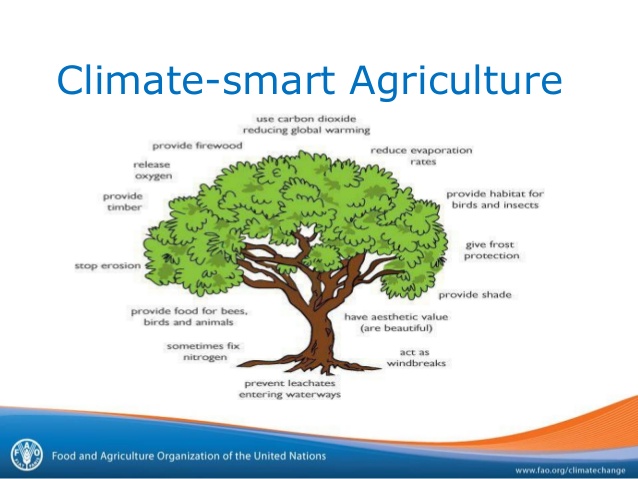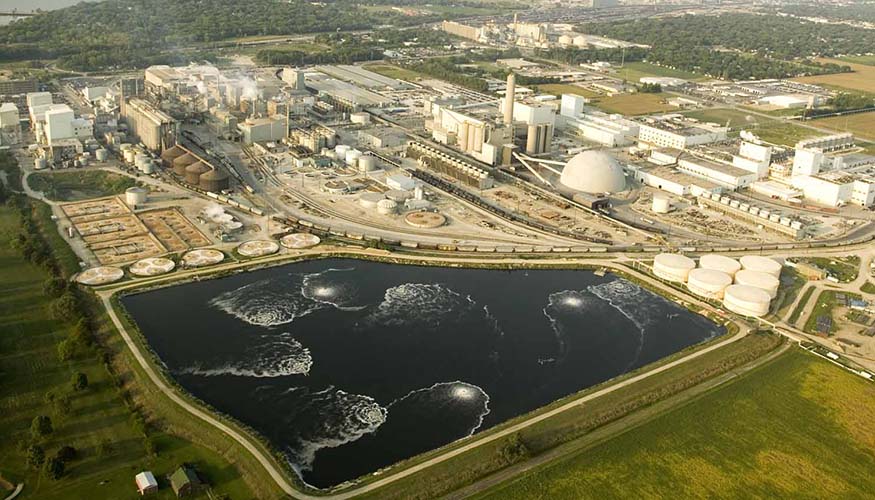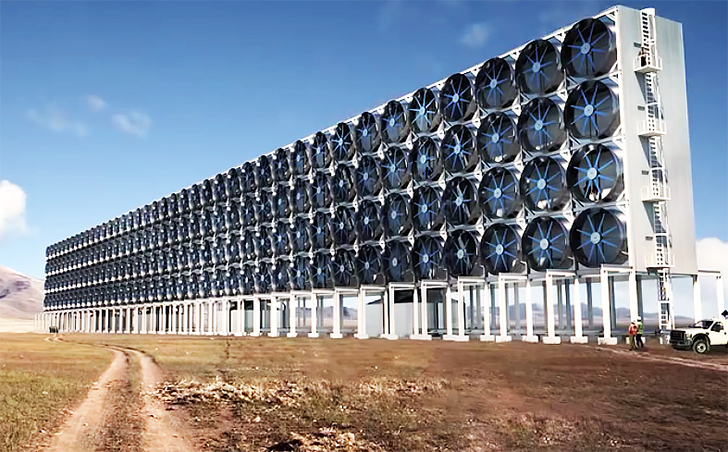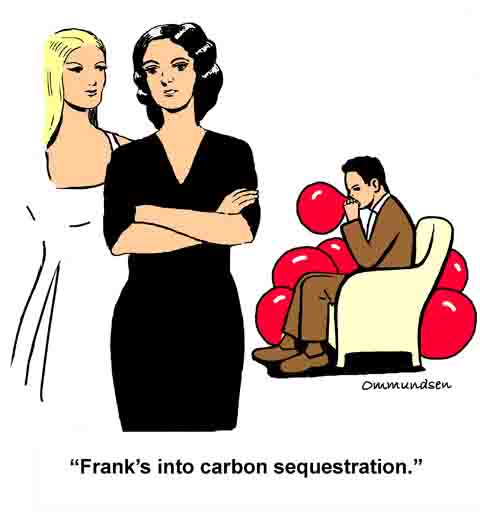Even as we struggle with heat waves, hurricanes, floods, wildfires, drought, and rising sea levels are as a result of climate change, the potential to sequester carbon in forests and soils offers hope. Humans have caused climate change by burning fossil fuels and disrupting the balance of nature, but there is an opportunity to restore these natural systems for carbon sequestration. Since we already used the carbon budget to keep global temperature increase to 1.5 degree Celsius, an action is needed to not only eliminate emissions but to recapture carbon dioxide that has already entered the atmosphere.
By stopping deforestation, and restoring degraded forests and soils we can combat climate change while improving biodiversity, soil productivity, and food security. Implementing better land management practices could be an important strategy to store carbon in the ground and lowering carbon emissions. Thus, curbing the rate of deforestation and improving land management and agricultural techniques should be a priority for policymakers at the federal and state levels in order to slow climate change, which has posed a significant threat to U.S agriculture.
Deforestation:
Forests are one of the largest carbon sinks and are currently absorbing and storing 450 billion tons of carbon. Forests are not only important in storing carbon, but they also play a significant role in preventing floods, supporting wildlife, moderating extreme temperature, presenting cultural values and providing recreation. However, after the industrial revolution, people started cutting down and burning trees for construction, shipbuilding, and energy producing, which resulted in turning a large amount of carbon back into the atmosphere. Human activities are the main reason for releasing carbon dioxide back into the atmosphere, including through deforestation.
Between 2001 and 2017, 5.57 gigatons of carbon (Gt) was released into the atmosphere as a result of tree cover loss in the United States. The U.S is cutting trees to make wood chips and wood pellets and export them from ports in the Southeast to Western Europe. Last year, Southern U.S. was identified as the largest exporter of wood pellets in the world as a result of a 70 percent increase in wood pellet exports from Southern. In 2017, the U.S lost 2.3 million hectares (Mha) of forest equivalent to 175 metric tons (Mt) of CO₂ emissions. Continued deforestation will neutralize all climate action efforts and strategies.
Afforestation and Reforestation Opportunities:
Afforestation is the process of planting forests in areas that have never been forested, while reforestation is the recovering of forests in areas where forests were destroyed. Reforestation and afforestation could make an important contribution to curb climate change and to improve the quality of air if managed appropriately. Thus, afforestation and reforestation are identified as negative emissions options since they are able to remove CO2 from the atmosphere. Afforestation, reforestation, and improving land management and conservation practices as a means of solution for removing CO2 from the atmosphere have several benefits to the society and environment. Planting new trees and recovering forests protects against soil erosion, helps retain soil moisture, increases biodiversity, and controls flooding. Also, these efforts can enhance agricultural productivity and develop resilient food systems. Moreover, planting trees has lower cost and environmental impacts compared to other negative emission technologies such as Bioenergy Carbon Capture & Storage.

Enterprise 50 Year Tree Pledge Surpasses 12 Million Plantings, 100 Reforestation Projects.Photo by Eterprise holdings
Afforestation and Reforestation:
The main problem is that planting forests is not an instant solution, since it takes time for seedling trees to be matured. Also, if afforestation is not properly managed, it can result in a reduction of local biodiversity, the modification of particular biomes, the introduction of non-native and potentially invasive species, and lost revenue from agriculture. Native grasslands that are altered to forests may not contain the same habitat for local species, and ill-managed reforestation efforts may result in the production of a monoculture (the practice of growing a single tree species) that lacks not only plant diversity but reduces the number of available habitat types for forest inhabitants. In addition, the application of nitrogen fertilizers would have several negative impacts on the environment. The production of nitrogen fertilizer releases a group of potent greenhouse gases known as nitrous oxides, along with CO2. Nitrogen pollution is identified as a threat to the biodiversity of species and biodiversity loss is a major environmental challenge
Soil Carbon Sequestration Opportunities:
Soil is a major sink of carbon and can store twice as much CO2 than is in the atmosphere. Unfortunately, farming currently plays a significant role in releasing a large amount of carbon into the atmosphere. As a result of an increase in the global population and the demand for food, commercial planting with the use of nitrogen fertilizer has increased, and frequent harvesting has resulted in reduced carbon levels in the soil. However, there are several land management practices which help promote inappropriate farming techniques. “Soil Carbon Sequestration” is one of the techniques which implements as a tool to remove CO2 from the atmosphere and store it in the ground. Thus, soil as a carbon sink can play a vital role in agricultural strategies to curb climate change and offset greenhouse gas emissions.
Agriculture, forestry and other land use techniques that store CO2 in the ground offer an opportunity to mitigate climate change. Farmers can help soil hold more CO2 by making sure crop residue and animal manure re-enters the soil. However, the amount of carbon that soil can hold depends on several factors such as types of soil, regional climate, and characteristics of soil microbes. Healthy soils with more organic matter can store carbon while providing agricultural and environmental benefits. Soil carbon storage directly benefits farmers by improving soil fertility, reducing erosion and increasing resilience to droughts and floods.
Conservation practices such as agroforestry, no-till agriculture, planting cover crops, forest farming, and silvopasture all increase the amount of carbon that can be sequestered in the soil.
- In agroforestry, crops are planted between rows of trees while the trees mature. The system can be designed to produce fruits, vegetables, grains, flowers, herbs, bioenergy feedstocks, and more. Agroforestry helps improve land productivity with several potential benefits for the communities such as reducing soil erosion, increasing plant growth, climate change adaptation, and increasing food security.
- “Forest farming” also is a way to grow food, herbal, botanical, or decorative crops under a forest canopy that is managed to provide ideal shade levels as well as other products.
- “Silvopasture” integrates trees with livestock and their forages on one piece of land. The trees provide timber, fruit, or nuts as well as shade and shelter for livestock and their forages, help animals from the hot summer sun, cold winter winds, or a heavy rainfall.
Soil Carbon Sequestration Challenges:

Land Management Techniques: Forest farming & Agroforestry methods to keep CO2 in the ground & improve soil fertilizing
The main problem is that the initiatives are all voluntary and have not been adopted on a large scale. Farmers are experiencing several barriers in the way of implementing smart agriculture. For example, tilling the soil is a traditional practice for controlling weeds, and shifting to no-till technique requires changing farm equipment and using other weed-control methods. Therefore, farmers have to encounter with the high costs of altering farm equipment and the risk of lower yields in the short-term. Furthermore, the benefits of soil carbon-rich take a long time to be viable and the long-term benefits of healthier crops and resilient communities are spread among societies. Thus, incentives and subsidies play a vital role in encouraging farmers to invest in cultivating healthier soils and split costs of shifting to new techniques since implementing the sustainable land management practices is critical to curb climate change and keep CO2 in the ground.
However, in the Midwest, for instance, around 50% of U.S farmland is operated by renters, and around 80% of agricultural land is owned by a non-farming landlord. Therefore, it would be difficult to encourage investments in soil health because renting tenants face short-term costs but might not receive the long-term benefits. Thus, policy-makers should provide tax incentives and subsidies for renters and non-farming landlords to be able to apply the land management practices. Since enhancing soil carbon by practicing land management techniques can prepare us to be well adapted for the negative impacts of climate change on the agriculture industry, there is an imperative need to invest in this solution and develop more helpful regulations to improve farmland productivity and communities’ resiliency.
Overall, fixing these barriers need providing the greatest financial and technical assistance and improving research and development (R&D) efforts as well as increasing private partnerships and offering incentives for farmers and renters. Improving the land management practices and the climate-smart agriculture is required a coordination and integration between various sectors dealing with climate change, agricultural development, and food security at the national, regional and local level. Local governments can provide tax credits for private companies to invest in different types of research with an emphasis on supporting soil carbon storage and to encourage them to offer useful consultant for farmers.
In Conclusion:
Well-managed natural systems carbon sequestration projects, along with the arrangement of sustainably produced timber, agriculture, and energy will produce numerous benefits including additional income for rural development, improve communities’ resiliency, and promote conservation programs. In order to improve climate change mitigation and sustainable development programs, governments must carry out the resolution of sustainability practices and oversee the implementation of these practices. The success of carbon sequestration projects will depend on the high carbon prices and aggressive emission reduction goals. Also, the political willpower plays an important role in prioritizing forestry activities and land management practices as part of mitigation portfolios. Care should also be taken to avoid unintended environmental and socioeconomic impacts that could threaten the overall value of natural systems carbon sequestration projects.
CASE STUDIES: (more…)










 Carson, California was recently on the path to becoming home to a pet-coke power plant, situated conveniently next door to the BP Carson refinery. The project, though touted as the “cleanest and greenest of energy plants possible,” would really have been an environmental and possibly a public safety nightmare. Luckily the project was scrapped, largely due to the activities of the Wilmington Coalition for a Safe Environment and other grassroots organizers.
Carson, California was recently on the path to becoming home to a pet-coke power plant, situated conveniently next door to the BP Carson refinery. The project, though touted as the “cleanest and greenest of energy plants possible,” would really have been an environmental and possibly a public safety nightmare. Luckily the project was scrapped, largely due to the activities of the Wilmington Coalition for a Safe Environment and other grassroots organizers.

